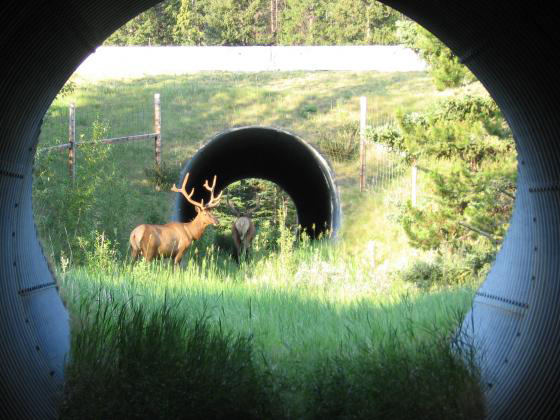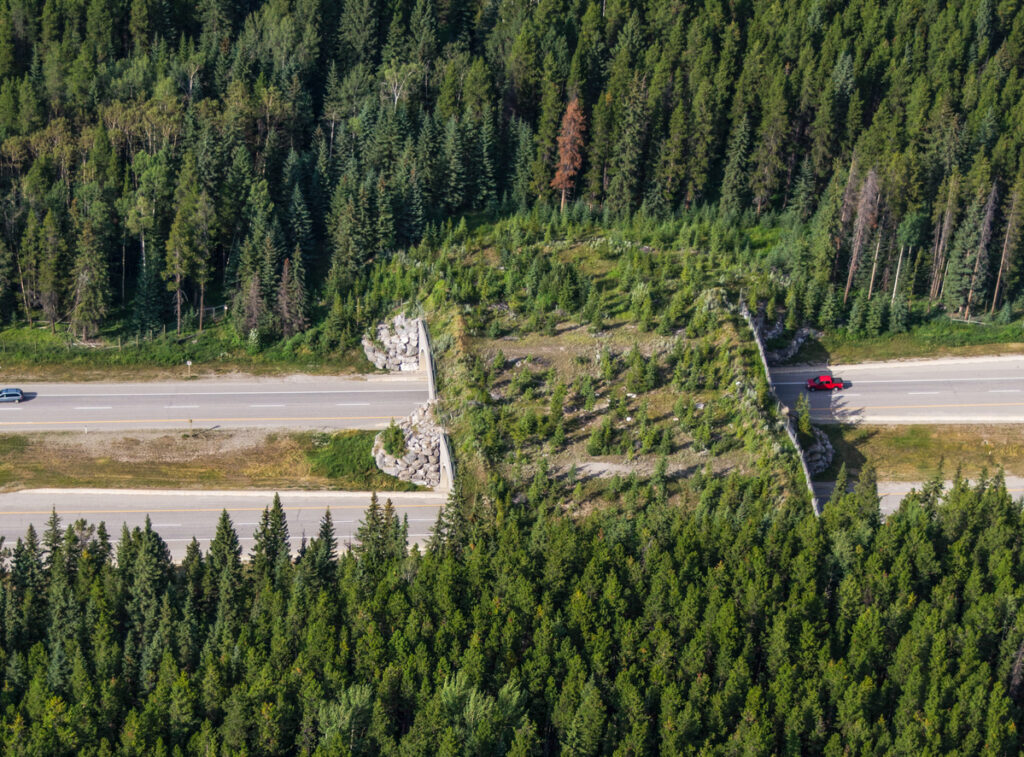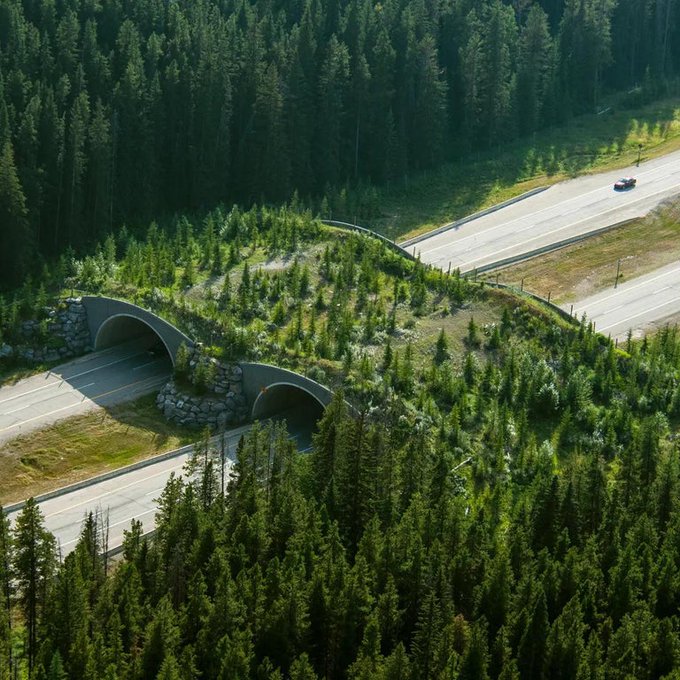
In Banff National Park, the Trans-Canada Highway runs through the Rocky Mountains, making it a vital route for motorists traveling between British Columbia and Alberta. But as traffic volume increased over the years, so did highway-related wildlife mortality. Enter the Banff Wildlife Crossings Project.

The Banff Wildlife Crossings Project was initiated in 1978 by Public Works Canada as a solution to decrease vehicle collisions and restore critical migration routes that had been blocked by the highway. The project involved twinning a 82-kilometer section of the Trans-Canada Highway from the east gate of the park to the British Columbia border, as well as the construction of wildlife crossings.
The first two wildlife overpasses were built in 1996 at a cost of $1.5 million each. Since then, the project has expanded to include 38 underpasses and six overpasses, spanning the entire section of the highway that runs through Banff National Park. The structures are designed to allow wildlife to safely cross the highway, reducing animal-vehicle collisions by over 80%, and by more than 96% for elk and deer alone.

The overpasses may look like any other highway bridge to passing motorists, but to the wildlife, they are a vital link between habitats. The top of the overpasses is covered in soil and vegetation, allowing animals to cross from one side of the highway to the other without interruption. Fencing along the sides ensures the animals stay on the overpass and off the road.
Long-term research and monitoring of the crossings shows that more than 12 species, including deer, lynx, coyotes, wolves, wolverines, and bears, use the crossings. Elk were the first large species to use the crossings, testing them out while they were still under construction. Different species also have different preferences, with grizzly bears, deer, moose, and elk favouring the open air of the overpasses, while cougars and black bears prefer the cozy coverage of the tunnels.

The crossings have not only reduced animal-vehicle collisions but also helped maintain genetic diversity in wildlife populations, reconnecting habitats on either side of the highway and allowing different groups of the same species to interact.
The Banff Wildlife Crossings Project has been a resounding success, positioning Banff National Park as an international leader in road ecology. Scientists from around the world have visited the park to gain inspiration and education, returning home to develop crossings for their own wildlife populations, such as tigers in Asia, howler monkeys in Costa Rica, and jaguars in Argentina.



The Banff Wildlife Crossings Project is a reminder that wildlife and humans can coexist, even in heavily trafficked areas. It is a testament to the power of innovative engineering and collaboration between different organizations to create solutions that benefit both wildlife and people.

Leave a Reply